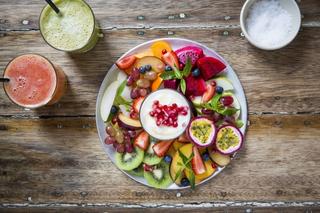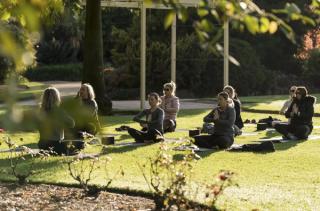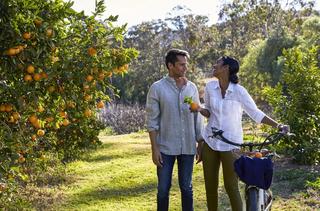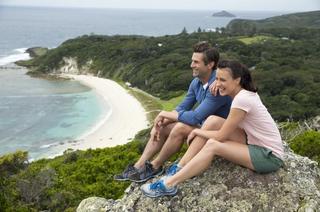What is wellness travel?
Wellness travel is travel associated with the pursuit of maintaining or enhancing one’s personal wellbeing.
This type of travel has a focus on activities and experiences geared to overall mental, emotional and physical health.
Source: Global Wellness Institute
Wellness travel vs medical tourism
Medical tourism is more reactive in that it involves travel to receive treatment for a diagnosed ailment, condition or illness. Wellness travel is motivated by a desire for a healthy lifestyle, preventing stress and proactively looking after wellbeing.
Wellness travel, however, can still incorporate medical or scientific, evidence-based elements.
Who are wellness visitors?
There are two types of wellness visitors: primary and secondary.
Primary wellness visitors choose a destination or experience where wellness is the sole purpose or motivation for their trip.
Globally, these visitors account for 15 per cent of wellness travel spending. They are looking for destinations to nourish their mind, body and soul with experiences such as destination spas, immersive health resorts, yoga and mindfulness retreats or pilgrimages and guided walking holidays.
Secondary wellness visitors add wellness elements to a regular leisure or business trip, with wellness not the prime motivation for their travel. Globally, these visitors account for 85 per cent of all wellness travel expenditure. Wellness touch points can be included in accommodation offerings, tours, activities and attractions.
Why target wellness visitors?
- They stay longer, averaging five to seven nights per stay.
- They spend more than average (41 per cent more for international wellness visitors and 175 per cent more for domestic wellness visitors).
- They travel out of peak season and are more likely to be a return visitor.
Source: Global Wellness Institute Wellness Tourism Initiative
How to create wellness experiences
Wellness travel offers an opportunity for visitors to prioritise their wellbeing while exploring new destinations and cultures. Visitors are searching for experiences where they can be immersed in nature, enjoy local food and culture, attend workshops and learn new skills, practice mindfulness, connect with loved ones or be pampered.
By incorporating wellness elements into your regular product offering, you can meet the varying needs and budgets of secondary wellness visitors. Through collaboration with other like-minded businesses in your region, you can also tailor experiences, support the local community and sell your destination more broadly.
42% of visitors want to go on a break that focuses on their mental and physical health. Source: Booking.com Travel Predictions 2023, Global Survey
Quick tips for including wellness elements in your experience
Here are some specific opportunities related to the type of experience you offer to visitors.

Accommodation
Wellness elements can be incorporated into the services, food and drink, activities, and sustainable practices at your property.
Services
- Provide access to spaces that connect visitors with nature, such as gardens, walking trails, outdoor seating areas or rooftop terraces.
- Bring nature indoors with plants and green spaces.
- Create indoor spaces that encourage relaxation with comfortable seating, soothing music and scent diffusers.
- Offer sleep-focused amenities such as lavender-scented pillows, white noise machines, or sleep aid kits (eye mask, lip balm and ear plugs) available in rooms.
- Consider a digital detox service where visitors can choose a lockbox for their phone, laptop or other technology; or promote device-free zones within the property.
- Offer spa services if possible or extend discounts for visitors to local spas.
- Equip rooms with mindfulness and relaxation resources, such as guided meditation audio tracks, calming music, yoga mats, eye masks or aromatherapy diffusers.
- Establish an on-site meditation or quiet space for yoga, stretching or gentle exercise.
- Develop a wellness package that includes accommodation, food and activities that is available on selected dates or seasons.

Food and drink
- Establish partnerships with local farmers, fishers and artisanal food producers to source fresh, seasonal and organic produce. Consider sharing their stories with guests on restaurant and in room menus, along with the health benefits of the produce.
- Collaborate with nutritionists or wellness experts to create a dedicated wellness section to the menu that caters to specific dietary needs by offering vegetarian, vegan, gluten-free or low-calorie choices.
- Clearly label and promote healthy menu items, making it easy to identify nutritious choices.
- Add organic or natural wines or low-alcohol beverages on the drinks menu.
- Encourage customisable meals by offering a variety of ingredients and preparation methods. For example, offer a build-your-own salad option or picnic hamper or choices between grilled, steamed or baked proteins on the menu.

Activities
- Create a local trail map for walkers, cyclists and runners.
- Improve on-site fitness facilities.
- Offer complimentary bicycle rentals or water sports equipment.
- Consider offering yoga, pilates, breathwork or other artistic, mindful or fitness related classes led by certified instructors.
- Arrange regular mindfulness activities like self-guided relaxation sessions or meditative walks.
- Collaborate with other local businesses to offer a range of outdoor activities on specific dates each month.
- Promote wildlife watching in your location by providing binoculars and lists of local birdlife or other native species.
Sustainability
- Supply water refill stations and re-usable stainless steel drink bottles for guests to use during their stay.
- Eliminate single-use plastic bathroom amenities with larger refillable bottles.
- Consider products and brands that use local, natural and/or organic ingredients for amenities.
- Present a clear place to recycle glass and plastic.
- Install electric vehicle charging stations.
- For more tips, go to Quick tips for creating sustainable experiences.

Tours, activities, and attractions
By incorporating wellness elements in your regular product, you can target different visitors and expand the range of experiences you offer.
- Include a guided meditation on your walk, kayak, canoe, surfing or stand-up paddleboard experience.
- Immerse visitors in nature with a forest bathing (known as shinrin-yoku) practitioner. Visitors are encouraged to walk in the natural environment and consciously connect with their surroundings.
- Support local regenerative projects in your experience. Examples include collecting or analysing data on wildlife and plants or cleaning up a destination on behalf of environmental organisations, planting native trees or connecting with local community initiatives and giving back in some way as part of their stay.
- If complementary to your experience, consider offering therapeutic interactions with domesticated animals, such as dogs, horses or farm animals.
- Collaborate with Aboriginal organisations to include native ingredients, bush medicine or healing Country talks into your experience.
- Hero seasonal, local and organic produce in picnics, meal options or market visits.
- Include an educational or artistic activity in your wellness experience so visitors can take their learnings or new skills home, such as a workshop or masterclass with a local artist, artisan or chef.
- Create space and time in your visitor experience for quiet moments.
- Consider creating wellness experiences that offer a combination of activities across nature, water-based pursuits, culture, the arts and food to cater to physical, emotional and mental wellbeing.
In 2022 wellness travel was valued at US$651 billion globally and will grow 16.6% annually until 2027. Source: 2023 Global Wellness Economy Monitor

Share your wellness experience
Once you have added wellness elements to your experience, showcase your new offering with your visitors, the media, your staff and travel distributors.
- Tell your visitors before they arrive about your new experiences by having a dedicated wellness section on your website with inspiring imagery, video, clear descriptions and access details.
- Ensure your bookable wellness experience is easy to find and book online via a clear ‘book now’ button on your website. Find out more here.
- Create or update your Australian Tourism Data Warehouse (ATDW) online listing with your experiences to promote via Destination NSW consumer websites, visitnsw.com and sydney.com.
- Update your current travel distribution partners about your new experience and consider working with dedicated wellbeing distributors such as Well Traveller, Life Unhurried, Salty Swims or Green Getaways.
- Let Destination NSW know about your new experiences via product@dnsw.com.au and media@dnsw.com.au.
- Advise your local tourism organisation, Visitor Information Centre and Destination Network of new or updated experiences.
- Showcase your wellness initiatives on your social media channels. Focus on visitor or community benefits and outcomes. Find out more here.
- Explain and teach your staff about what your business is doing so they can be ambassadors.
- Find out more about promoting your experiences here.
Resources
- Global Wellness Institute - wellness travel insights, case studies and news.
- Future of Demand, Tourism Australia.
- Watch our webinar on how to create wellness experiences here.
Produced by Destination NSW in collaboration with Droga & Co.
